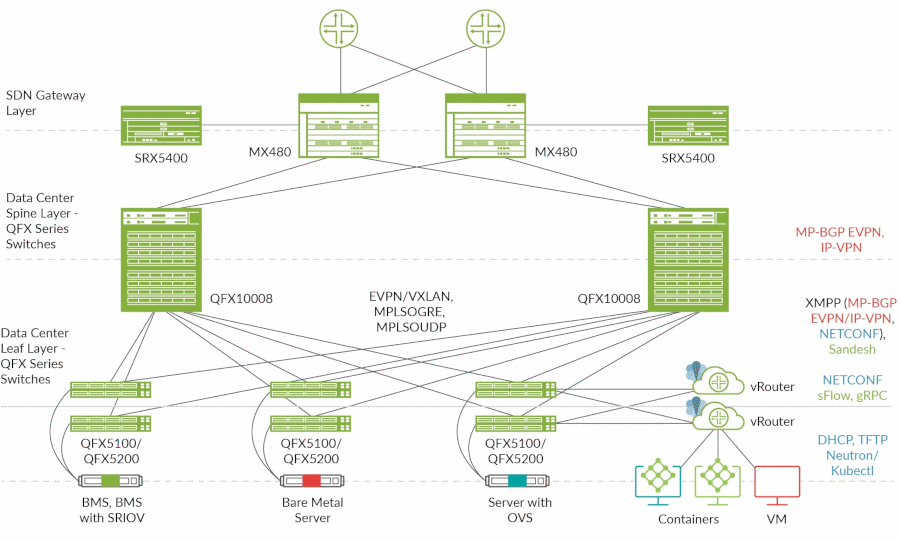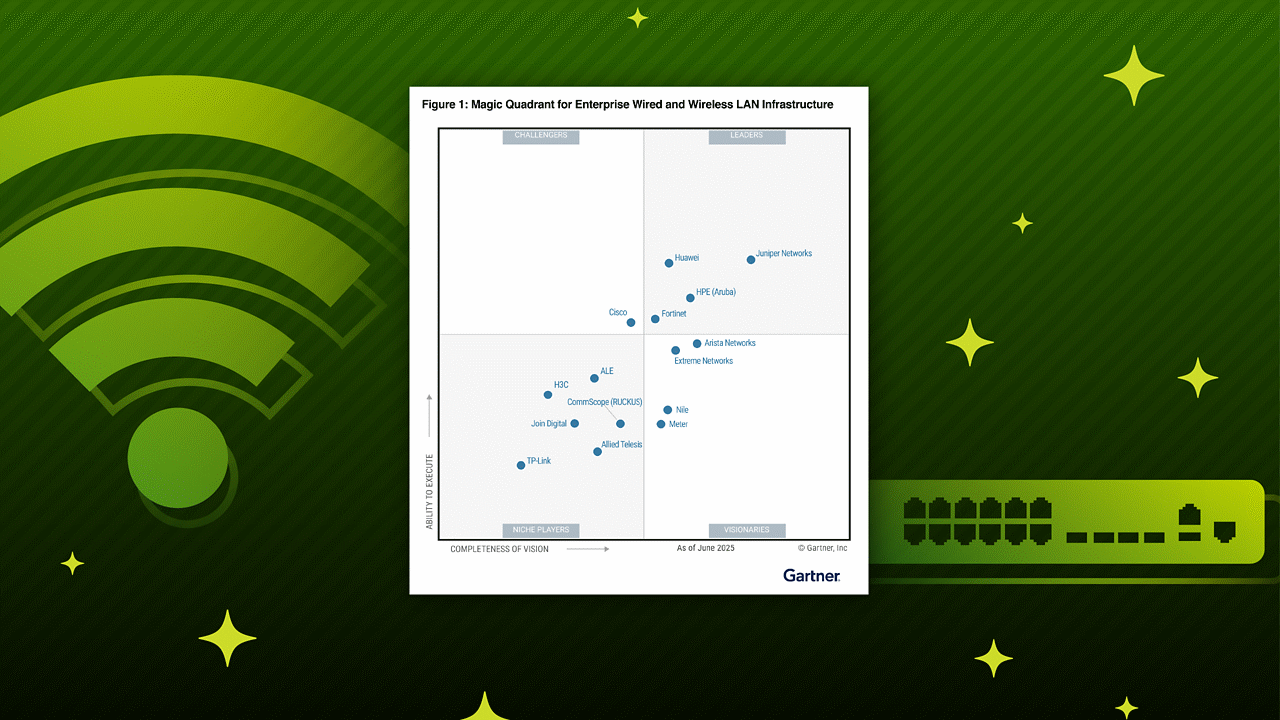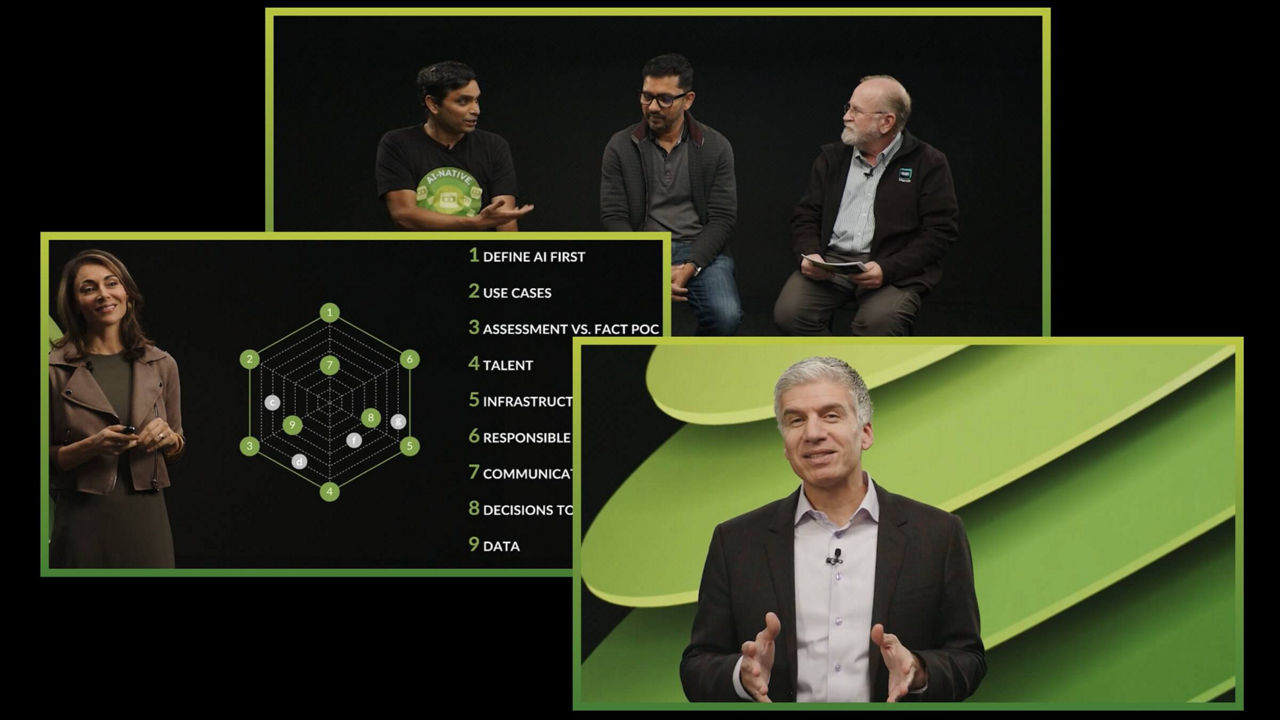Contrail Enterprise Multicloud
Download DatasheetProduct Overview
Contrail Enterprise Multicloud automates the transformation of multiple independent cloud infrastructures into a seamless managed multicloud, providing full control of and visibility into all services. Leveraging the principles of SDN and network overlays, Contrail Enterprise Multicloud extends managed infrastructures from private clouds to physical network devices in data centers, cloud interconnects, WANs, and public clouds. Built on open APIs and standard protocols, Contrail Enterprise Multicloud removes the complexity of networking and automation by abstracting the operation of cloud environments, allowing users to focus on revenue-generating services.

Product Description
Juniper® Contrail® Enterprise Multicloud is a single platform that handles all overlay and underlay management; heterogeneous compute environments, including bare metal servers, virtual machines, containers, and networking devices; private and public clouds; networking and security orchestration policies, including microsegmentation; and advanced analytics.
Contrail Enterprise Multicloud follows a pure software-defined approach that spans physical or virtualized public and private cloud infrastructures, providing Network as a Service (NaaS) for workloads running on physical, virtualized, or containerized form factors in any cloud environment. Contrail Enterprise Multicloud integrates with widely used orchestration tools such as OpenStack, Kubernetes, OpenShift, and VMware cloud management systems, as well as popular DevOps tools like Ansible and Helm. It unifies the semantics and policy automation capabilities of application-to-application networking independent of the cloud environment using a common and consistent data model for overlay services/policies while employing cloud-specific language to program and control the network. Policies can be written in straightforward business-oriented language to restrict or allow applications to communicate in the multicloud environment. Contrail Enterprise Multicloud also provides a consistent view into the performance and health of networking devices, application workloads, storage, and compute resources across the multicloud.
Architecture and Key Components
Contrail Enterprise Multicloud is built using the following components:
- Juniper Contrail Networking™, including Contrail vRouter for running virtualized/containerized workloads in a compute environment; fabric management (device, physical network function/virtual network function management) on fabric and overlay configurations on devices.
- Juniper Contrail Insights analytics package to collect, correlate, and visualize information related to infrastructure and overlay usage.
- Contrail Command, a simple UI designed to make cluster, infrastructure, and overlay management, as well as analytics and troubleshooting, intuitive and easy.
- Compatible with orchestration platforms such as Kubernetes, OpenShift, Mesos, OpenStack, VMware vSphere/vRealize operations. Integrations are built, certified, and tested working in conjunction with technology alliance partners such as Red Hat, Mirantis, Canonical, NEC, and others. Contrail Networking sits under these orchestration systems and integrates northbound via published REST APIs.

Figure 1: Contrail Enterprise Multicloud as a fabric management and SDN overlay for data center infrastructure.
Features and Benefits
Key Features
- Open and customizable: Contrail Enterprise Multicloud uses open, standard, and mature protocols and data models. Device operations are based on Ansible playbooks that users can clone or customize, as needed. Users do not need to wait for release upgrades to benefit from customization; the ability to assign roles to devices and network functions makes Contrail Enterprise Multicloud a perfect fit for any deployment scenario or architecture.
- Standards-based fabric management: Contrail Enterprise Multicloud leverages mature standards and protocols such as BGP EVPN/VXLAN to normalize data center and fabric operations. Through customizable roles, users can decide where and when to implement different network virtualization overlay architectures (CRB, ERB, Ethernet, IP).
- Support for Day 0 operations: Contrail Enterprise Multicloud discovers and imports data center devices, servers, appliances, and public cloud tenants. Both greenfield and brownfield device life cycles are supported.
- Data center software upgrades through a single pane of glass: Contrail Enterprise Multicloud reduces data center device outages related to software upgrades by managing upgrade rollouts through a single pane of glass.
- Server life-cycle management: Contrail Enterprise Multicloud supports server life-cycle management by integrating components such as Ironic, Glance, switch for server PXE boot, and image management.
- Multitenant networking service management across all workloads: Contrail Enterprise Multicloud supports consistent overlay services using EVPN and Virtual Extensible LAN (VXLAN) (L2, L2/L3, L3) across all workload types, whether virtual machines or containers running on vRouters, bare-metal servers, or other hypervisor platforms. Depending on the cloud infrastructure and workload type, Contrail automates the delivery of networking services by applying configurations and through consistent route leaking using overlays.
- High availability: Contrail Enterprise Multicloud components are highly available and offer active/active redundancy. High availability is extended to workloads in the data center, leveraging active/active server multihoming.
- Analytics services: Insightful visualization and diagnostics of virtual overlay and physical underlay networks enable real-time and historical infrastructure analytics that can be consumed through REST APIs or Apache Kafka. Users can also very easily set up live packet captures of traffic between virtual networks using built-in GUI features.
- API services: REST APIs for configuration, operation, and analytics provide seamless integration with popular or customized orchestration systems. This includes AWS VPC API compatibility for seamless deployment of applications in a hybrid cloud platform.
Key Benefits
- High scale and performance: Contrail is field-proven, deployed in some of the world’s most massive data center clouds.
- Unified multicloud policy: In order to achieve one IT platform, there must be functional and nonfunctional similarity between application platforms in both private and public clouds. Contrail Enterprise Multicloud is an excellent choice as a multicloud automation solution for implementing private cloud with software-defined infrastructure.
- Seamless integration: Contrail Enterprise Multicloud has been integrated, tested, and certified with a wide variety of software for orchestration, automation, operating systems, and virtualization or containerization. Contrail Enterprise Multicloud also interoperates with industry-standard routing and switching systems to bridge overlay virtual networks to any other networks you have.
Key Functionality
- Open source, open standards for seamless interoperability: Contrail Enterprise Multicloud eliminates the need to rip-and-replace by supporting standards-based protocols, enabling interoperability in a multivendor physical infrastructure to maximize investment protection. It supports open standard interfaces for configuration control and management (NETCONF/RPC), using Ansible playbooks; REST/HTTPS APIs; XMPP), routing (BGP, BGP IP-VPN, and BGP EVPN for routing control); forwarding (VXLAN with EVPN control plane, MPLSoUDP, MPLSoGRE, plain IP, IP over IPsec); and analytics (JTI, OpenConfig, SNMP, sFlow, J-Flow, gRPC, system logging).
- Network virtualization: Contrail Enterprise Multicloud provides a robust network virtualization solution by leveraging the EVPN/VXLAN and L3VPN standard for Ethernet/ IP overlays. The virtual network segments provide a clean approach to microsegmentation and multitenancy, and alleviate the challenges associated with a VLAN-based or L2-based segmentation approach.
- Network programmability and automation: Contrail Enterprise Multicloud implements the concept of “intent compiler” by translating abstract high-level workflows into specific rules/policies to automate the provisioning of workloads and enable network and security service chaining. For example, you can request workload-to-workload connectivity without getting into details about underlying elements like ports, VLANs, subnets, switches, routers, etc. In addition, a unified model for configuration, operation, and analytics is exposed through REST APIs, as well as libraries in various programming languages such as Python, Go, Javascript, and Ansible.
- Infrastructure analytics and visualization: Contrail Enterprise Multicloud leverages Contrail Insights to provide insights into different cloud infrastructures, simplifying operations and decision making through proactive planning and predictive diagnostics. The analytics engine is designed for very large-scale ingest and querying of structured and unstructured data. It is exposed using REST APIs and a GUI-based query engine.
| Life-Cycle Management of VPC as Remote “Infrastructure” Pod | Automation of Transport and Routing Between Clouds | Life-Cycle Management of Workloads and Tenants Across Clouds | |
| Native VPC (no Juniper software in the VPC) | Via Contrail using public cloud native REST APIs to the public cloud | ||
| Contrail vRouter as virtual gateway only | Via Contrail using public cloud native REST APIs to the public cloud | Via Contrail using XMPP | Using public cloud native REST APIs: the public cloud is managed as a remote “tenant” |
| vSRX/vMX as virtual gateways | Via Contrail using NETCONF/RPC to the vMX/vSRX as virtual gateways | ||
| Contrail Enterprise Multicloud cluster in VPC: workloads running on vRouter in public cloud | Via Contrail using XMPP to vRouter virtual gateway | Via Contrail (and its orchestrator) in VPC | |
Contrail Enterprise Multicloud Use Cases
Contrail Enterprise Multicloud offers a dynamic and easy to use solution that allows enterprises to automate their cloud infrastructures, as well as the services delivered through them. The most common use cases are:
- Automation of a data center build-up or scale-out in just minutes:
- Discover, import, and configure newly added devices so that you can start delivering services through them
- Remove the complex, error-prone operations of data center device configurations
- Gain visibility into how the data center infrastructure is performing, and how customers are being served
- Speed-up BMSaaS offering:
- Automate BMS life-cycle management (and associated device configurations) so you can deliver BMSaaS efficiently and quickly
- Visualize server and network device traffic and predict scale-out needs to anticipate the demand
Ordering Information
This product follows the Juniper Care Software Advantage pricing model. Please be advised that the following items constitute an order:
- Select a software license based on the number of forwarding enforcement and reporting nodes such as: vRouter computes (assumes 2 sockets/server); physical devices (fixed form factor, up to 4 slots modular devices; up to 8 slots; more than 8 slots); public cloud VPCs; vRouter virtual hosts. The license is either subscription (fixed term) or perpetual (unlimited term). A separate Contrail/Contrail Insights license must be purchased for every cloud infrastructure where the installation of a Contrail/Contrail Insights controller occurs.
- A subscription software license includes Juniper Care Software Advantage, entitling you to software updates and upgrades, 24x7 remote technical support, and online support.
- A perpetual software license excludes Juniper Care Software Advantage; the latter must be purchased.
- If your order includes a hardware product/platform, select a hardware license based on your networking, connectivity, and/or security requirements (e.g., interface options, I/O, services). You may need to purchase additional licenses in support of the base hardware license (e.g., power cables, network interface cards).
Juniper Networks products are sold directly as well as through Juniper partners and resellers. For information on how to buy, please visit: www.juniper.net/us/en/how-to-buy/index.page.
About Juniper Networks
Juniper Networks brings simplicity to networking with products, solutions and services that connect the world. Through engineering innovation, we remove the constraints and complexities of networking in the cloud era to solve the toughest challenges our customers and partners face daily. At Juniper Networks, we believe that the network is a resource for sharing knowledge and human advancement that changes the world. We are committed to imagining groundbreaking ways to deliver automated, scalable and secure networks to move at the speed of business.

















